Self-analysis materials (e.g., photos, charts, study reports to interpret, questions to think about etc.)
1. Read the medical history of the patient, a young athlete, who suffered a knee injury during a futsal match and underwent ACL reconstruction.
2. Analyze the test results, pay attention to the results of the ACAL-RSI and TKS 11 questionnaires.
3. Think about what you would do with this patient and then read what recommendations she received from the physiotherapist.
Patient: Woman, 21 years old, body height 164 cm, body weight 58 kg, soccer player, striker
Diagnosis: Contact injury of the ACL and medial meniscus of the left knee joint
Treatment: Surgical reconstruction of the ligament 12 months ago, the patient completed intensive rehabilitation
Reason for visiting a physiotherapist: still feeling of instability and escaping of the knee joint, fear of landing and jumping on the involved limb
Clinical examination
Pain: none
Swelling: none
Knee joint mobility: normal
Lahman test: positive – ACL failure
Lower limbs loading symmetry: load on the right lower limb – 27 kg, load on the left lower limb – 31 kg. The patient placed greater load on the involved limb while standing habitualy. The difference was 6.9%.
Muscle strength assessment:
The strength of isometric contraction of the knee extensors and flexors was assessed using an electronic dynamometer.
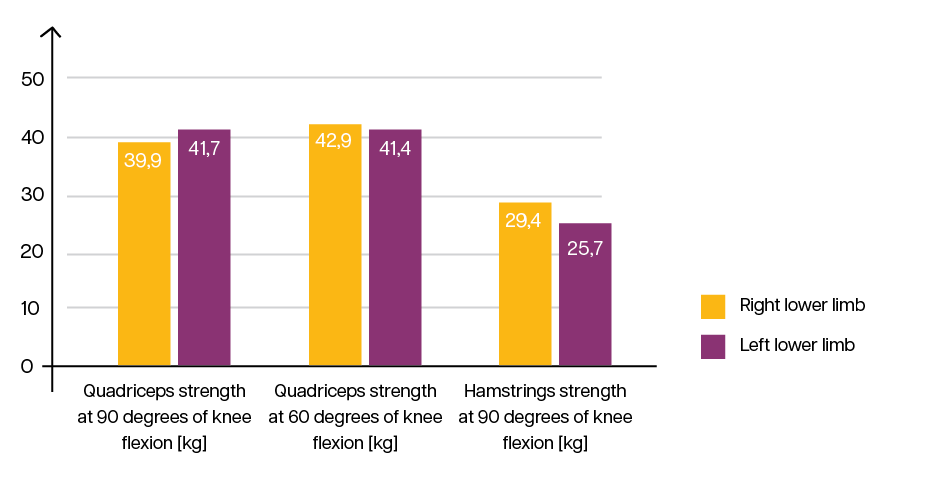
The ratio of the strength of the knee flexors to the extensors at 90° of knee flexion (H/Q ratio) was estimated. This ratio was 74% for the right lower limb and 62% for the left lower limb (expected value 60-80%).
The ratio of the strength of the quadriceps femoris muscle and hamstring muscles of the right and left lower limb was estimated according to the formula (strength of the muscle of the left lower limb/strength of the muscle of the right lower limb) *100:
– the ratio of the strength of the left and right quadriceps femoris muscles at 90 degrees of flexion was 105%,
– the ratio of the strength of the left and right quadriceps femoris muscles at 60 degrees of flexion was 97%,
– the ratio of the strength of the hamstring muscles of the right and left sides of the body at 90 degrees of flexion was 87%.
Balance assessment
Cooper & Hughes Vestibular Balance Test.
Starting position: The patient stands on one leg slightly bent at the hip and knee joints, hands placed on hips.
Part I of the test: for 15 seconds, the patient performs head rotation (full-range movement from right to left) at a rate of one movement per second
Part II of the test: for 15 seconds, the patient moves his head up and down (full-range nodding movement) at a rate of one movement per second
The test is passed if patient can maintain single leg stance and do not take their hands off their waist for both assessments
Result:
The patient failed the balance test due to the inability to maintain her balance on the uninvolved limb in both test tasks.
Explosive strength of lower limbs
Single Hop Test for distance
The result for the right lower limb is 135.6 cm
The result for the left lower limb is 124.0 cm
Symmetry Index – 98.8%.
Triple Hop Test for distance
The result for the right lower limb is 482.3 cm
The result for the left lower limb was 472.6 cm
Symmetry index – 97.9%
Triple Crossover Hop for distance
The result for the right lower limb is 480.0 cm
The result for the left lower limb is 471.5 cm
Symmetry index – 98.2%
Side Hop Test
The result for the right lower limb was 43.0 cm
The result for the left lower limb was 42.0 cm
Symmetry index – 97.7%
The patient felt anxious before taking the test on the operated limb. She was concerned whether her knee would be able to “cope” with jumping to the side, as these were movements that made her feel insecure.
Tuck Jump Assessment
During the TJA test, the following was noted:
– knee valgus during landing,
– landing with one foot more forward,
– asymmetric landing (left foot touches the ground faster),
– lifting thighs to unequal heights,
– landing outside the designated field,
– deterioration of jumping technique during the test.
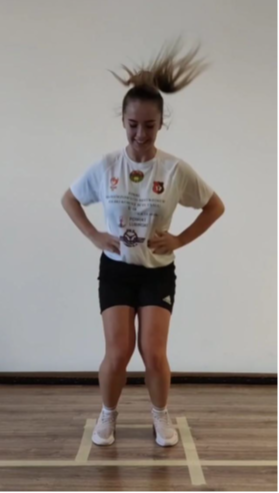
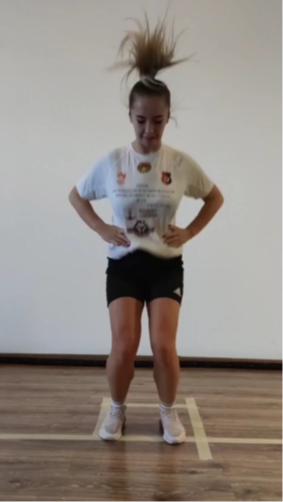
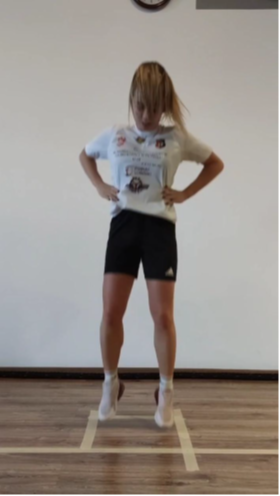
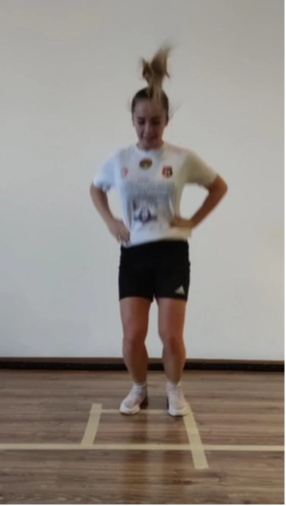
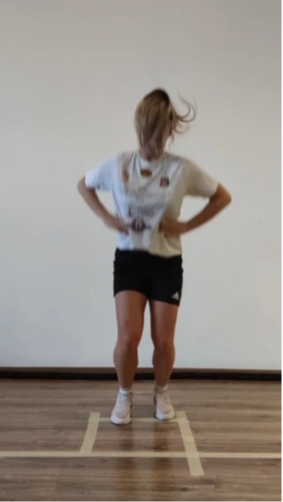

Questionnaire result:
Subjective knee form – IKDC: The patient obtained a score of 85%, which indicates slight limitations in everyday activities and sports activities.
Tampa Scale of Kinesiophobia (TSK-11): The patient obtained a score of 20, which means excessive fear of movement.
Summary and recommendations:
In her current functional state, the patient is not recommended to return to sports, mainly due to lack of mental and emotional readiness.
Consultation with a sports psychologist is recommended to reduce the fear of movement – kinesiophobia. Further strength training is recommended, with particular emphasis on strengthening the hamstring muscles of the left lower limb, exercises that increase motor control not only of the involved limb, but also of the uninvolved limb, and continuation of plyometric training. Work on the eccentric braking phase during landing, with particular emphasis on lateral jumps, may bring benefits. On-field training is recommended to prepare for returning to play on the pitch but without direct, unpredictable contact with another player.


Leave a Reply
Want to join the discussion?Feel free to contribute!